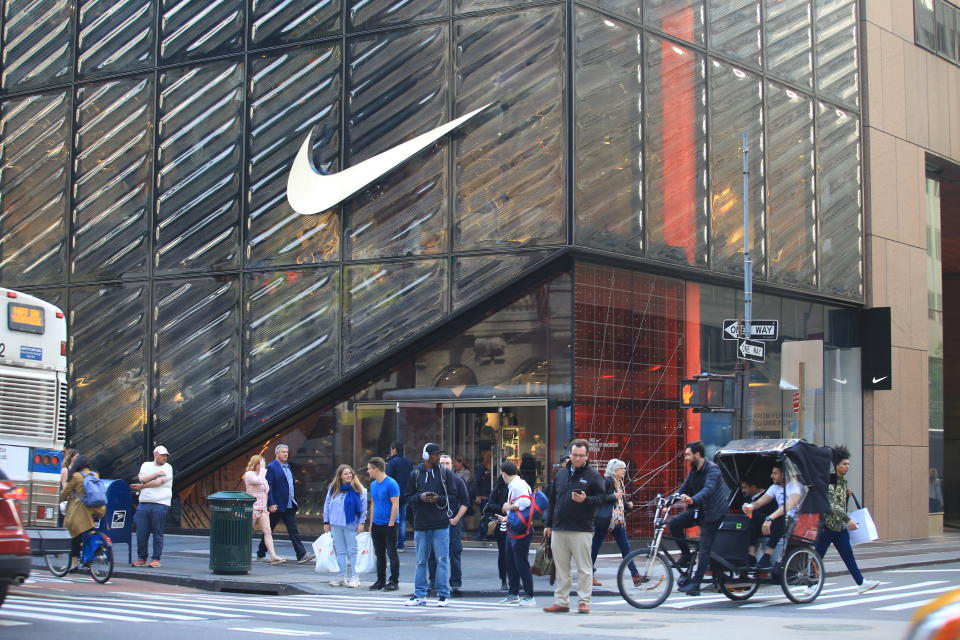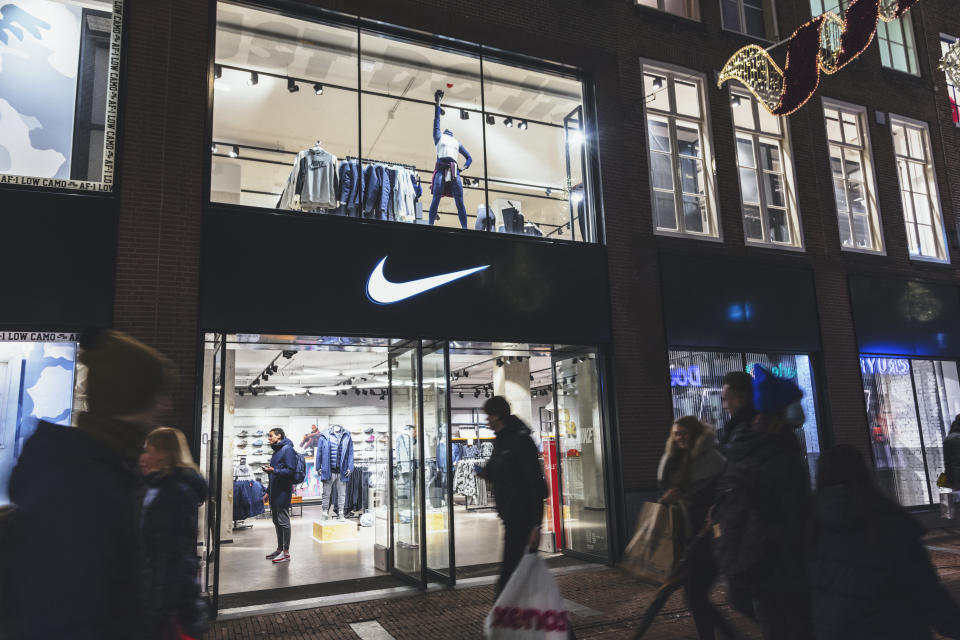The bright spot in Nike’s disappointing quarter will lead to job cuts
Nike's (NKE) disappointing fourth-quarter results reflected the harsh realities of COVID-19 facing most retail brands. However, the fundamentals of the Swoosh brand remain strong, with the company hanging its hat on numerous bright spots centered around its digital platforms.
Nike missed on both the top and bottom lines posting revenue of $6.31 billion, vs. $7.38 billion expected with a loss per share of 51 cents, vs. earnings expectations of 10 cents per share and Q4 revenue declined 44% on a currency-neutral basis.
Though the global sportswear giant missed Wall Streets' expectations, the consensus among analysts was that the COVID-19 pandemic was going to make Q4 a rough one for Nike.
By March 2020, Nike saw 90% of its retail stores shut down due to COVID-19, which forced the brand to rely on what it refers to as its “digital transformation.”
Nike saw its digital sales increase 75% in the fourth quarter (79% on a currency-neutral basis) with strong double-digit increases across all geographies making up about 30% of total revenue. The Beaverton Oregon company also, for the first time, surpassed $1 billion in annual digital revenue in both Greater China and the EMEA region. North America Digital grew 80%, and the Nike App itself grew by triple digits. Nike's SNKRS app also reached $1 billion in global demand for the first time.

The Swoosh brand is also ahead of schedule when it comes to its FY18 goal of 30% digital penetration by FY23. Nike CEO John Donahoe says that the brand is more than two years ahead of that pace.
On a call with analysts, Donahoe highlighted three areas of strategic acceleration, building the marketplace of the future, its new consumer construct, and the brand's end-to-end technology foundation.
“First, we will create a marketplace of the future, one more closely aligned with what consumers want and need,” Donahoe said. “Digital has redefined the industry over the past several years and Nike has led that change.”
The Nike CEO also noted that the company is looking at opportunities to build deeper and more meaningful relationships with consumers, and its vision centers around creating a “clear and connected” digital marketplace that matches that.
“We will invest in digital capabilities in our end-to-end technology foundation to accelerate our transformation. Simply put, we will more aggressively leverage technology to make Nike better. This single integrated technology strategy across our business will accelerate how we serve consumers ... This simplified approach will unlock more efficiency for the business while driving speed and responsiveness as we serve consumers globally.”
Despite the digital optimism, Executive VP & CFO Matthew Friend declined to give specific guidance due to the still uncertain global climate. However, he did say that when it comes to FY21, he expects to see sequential quarterly improvement in its financial results as retail reopens and supply and demand normalizes in each market. According to Friend, approximately 90% of Nike-owned stores are currently open.

Later on Thursday, Complex first reported that Donahoe, in a company-wide email, said Nike would soon be “forced to make some difficult choices” and that it would “likely result in a net reduction of jobs.”
Nike tells Yahoo Finance that the move is not being made strictly for cost savings but instead to invest more resources in its Consumer Direct Acceleration.
“We are building a flatter, nimbler company and transforming Nike faster to define the marketplace of the future. We are shifting resources and creating capacity to reinvest in our highest potential areas, and we anticipate our realignment will likely result in a net loss of jobs,” the company said in a statement.
Nike’s total liquidity was $12.5 billion with robust cash and equivalents and short-term investments of $8.8 billion, $4.1 billion higher than last year primarily due to proceeds from a $6 billion corporate bond issuance in March, according to the company’s May 31 balance sheet review.
A source familiar with the matter tells Yahoo Finance that the move is not expected to impact store employees or distribution centers.
This article has been updated.
Reggie Wade is a writer for Yahoo Finance. Follow him on Twitter at @ReggieWade.
Read more:
96% of teachers personally pay for students’ supplies: Survey
Read the latest financial and business news from Yahoo Finance
Follow Yahoo Finance on Twitter, Facebook, Instagram, Flipboard, LinkedIn, and reddit.

